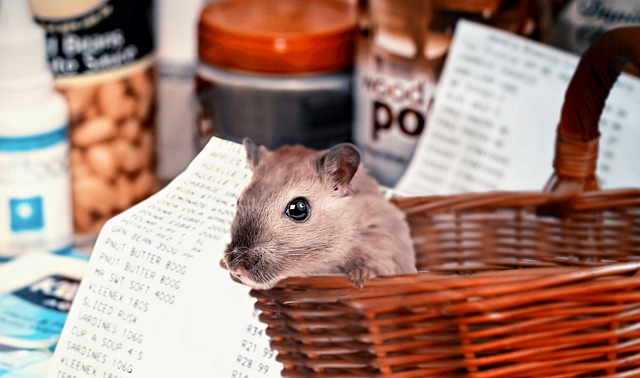Hamsters are beloved pets known for their cute and cuddly appearance. However, many people wonder whether hamsters know how to drink water. After all, they are small animals with tiny mouths and may be unable to reach their water bottles easily.
In this article, we will explore whether hamsters can drink water independently.
Hamsters are naturally desert animals used to get their water from food sources. However, when kept as pets, they are typically given access to water bottles or bowls. While it may seem simple for humans to drink from a water bottle, it can be challenging for hamsters.
Their small size and lack of opposable thumbs make it difficult for them to reach the spout. Therefore, it is essential to understand how hamsters drink water and whether they can do so independently.
Anatomy of a Hamster
Teeth
Hamsters have sharp, continuously growing incisors that they use for gnawing on food and other objects. These teeth are essential for survival in the wild, where they must chew through seeds, nuts, and other hard materials. Hamsters also have molars in their mouth that help them grind up their food.
Tongue
Hamsters have long, thin tongues to lap up water and other liquids. Their tongues are covered in tiny spines that help them grip food and move it around in their mouth. They also have a keen sense of taste, which allows them to identify different types of food and avoid anything harmful.
Thirst Mechanisms
Hamsters are naturally adapted to living in dry environments, so they have several mechanisms to help them conserve water. For example, they have highly concentrated urine and produce very little waste, which allows them to retain as much water as possible.
They also have a strong instinct to seek water sources and will drink whenever possible.
Overall, hamsters are well-equipped to drink water and stay hydrated. Their teeth and tongue are ideally suited for their diet, and they have developed mechanisms to help them conserve water in their harsh natural environment.
Water Drinking Habits of Hamsters
Frequency of Drinking
Hamsters are small animals that require a lot of water to stay hydrated. Therefore, they typically drink water several times daily, depending on various factors such as temperature, activity level, and diet.
Generally, hamsters drink more water during the warmer months when they need to cool down. They also tend to drink more water after eating dry food or treats to help them digest their food correctly.
Drinking Behavior
Hamsters have a unique way of drinking water. They use their front paws to scoop up water and bring it to their mouth. This behavior is known as “dipping” and is common among rodents.
Hamsters also spill water while drinking, making their bedding wet and uncomfortable. To prevent this, providing them with a water bottle instead of a bowl is recommended.
Preference for Water Sources
Hamsters prefer fresh, clean water that is free from any contaminants. They also tend to prefer water that is room temperature or slightly cool.
It is important to note that hamsters do not strongly prefer tap water or bottled water. As long as the water is clean and safe for consumption, they will drink it without issues.
In conclusion, hamsters can drink water and have a unique way of doing so. Therefore, providing them with fresh, clean water and a suitable water source is essential to stay hydrated and healthy.
Factors Affecting Hamsters’ Water Drinking Ability
Age
Hamsters of different ages have different water-drinking habits. For example, young hamsters may not be able to drink water properly, while older hamsters may drink more water than necessary. This is because young hamsters are still learning to drink water, and older hamsters may have health issues requiring them to drink more water.
Health
The health of a hamster can also affect its water-drinking ability. Hamsters with dental problems may not be able to drink water properly, while those with kidney problems may drink more water than usual. Therefore, it is essential to monitor a hamster’s water intake and consult a veterinarian if there are any concerns about its health.
Environment
The environment in which a hamster lives can also affect its water-drinking ability. If a hamster’s water bottle is not working correctly, it may be unable to drink water. Additionally, if the temperature in the hamster’s environment is too high, it may need to drink more water to stay hydrated.
In conclusion, several factors can affect a hamster’s water-drinking ability. Therefore, monitoring a hamster’s water intake and ensuring access to clean and functioning water sources is essential.
Conclusion
In conclusion, hamsters can drink water and have an instinct to seek out water sources. They can use their tongues to tap water and drink from various sources, such as water bottles and bowls. Therefore, it is essential to ensure that hamsters have access to clean, fresh water at all times to maintain their health and well-being.
While hamsters may not have the same cognitive abilities as humans, they can still learn and adapt to their environment. For example, they can learn to use water bottles and become accustomed to drinking from them. Additionally, they can regulate their water intake and stop drinking when hydrated.
It is important to note that while hamsters can drink water, they may not recognize when their water source is contaminated. Therefore, the owner is responsible for ensuring the water is clean and free of harmful bacteria or chemicals.
Overall, hamsters can drink water and have an instinct to seek out water sources. Providing clean, fresh water is essential for their health and well-being.




